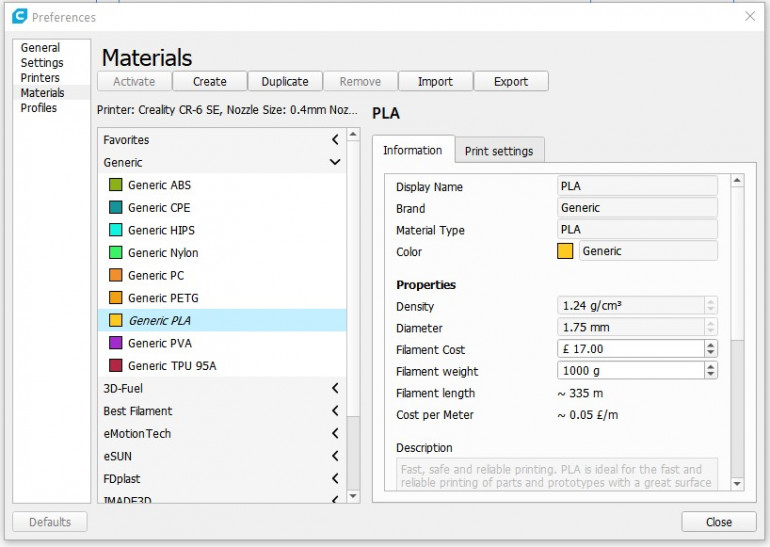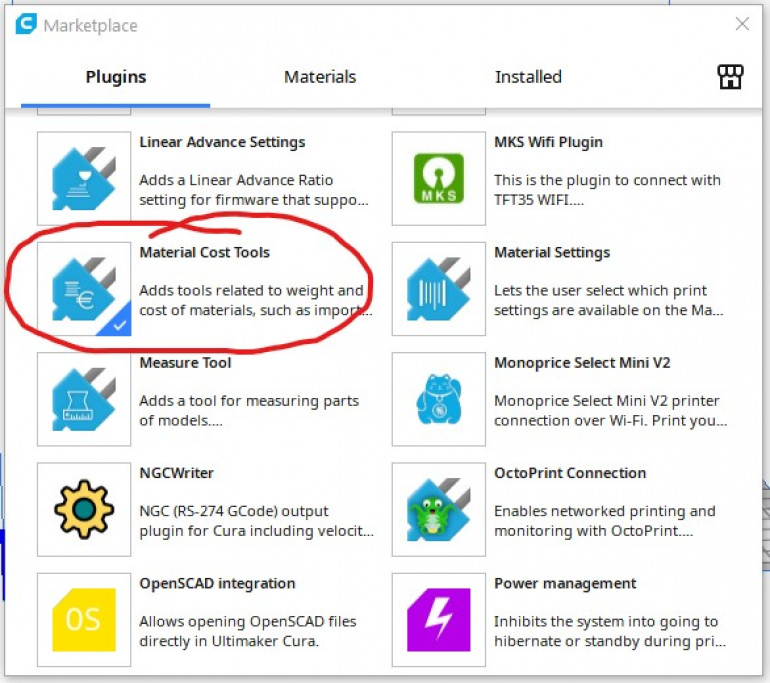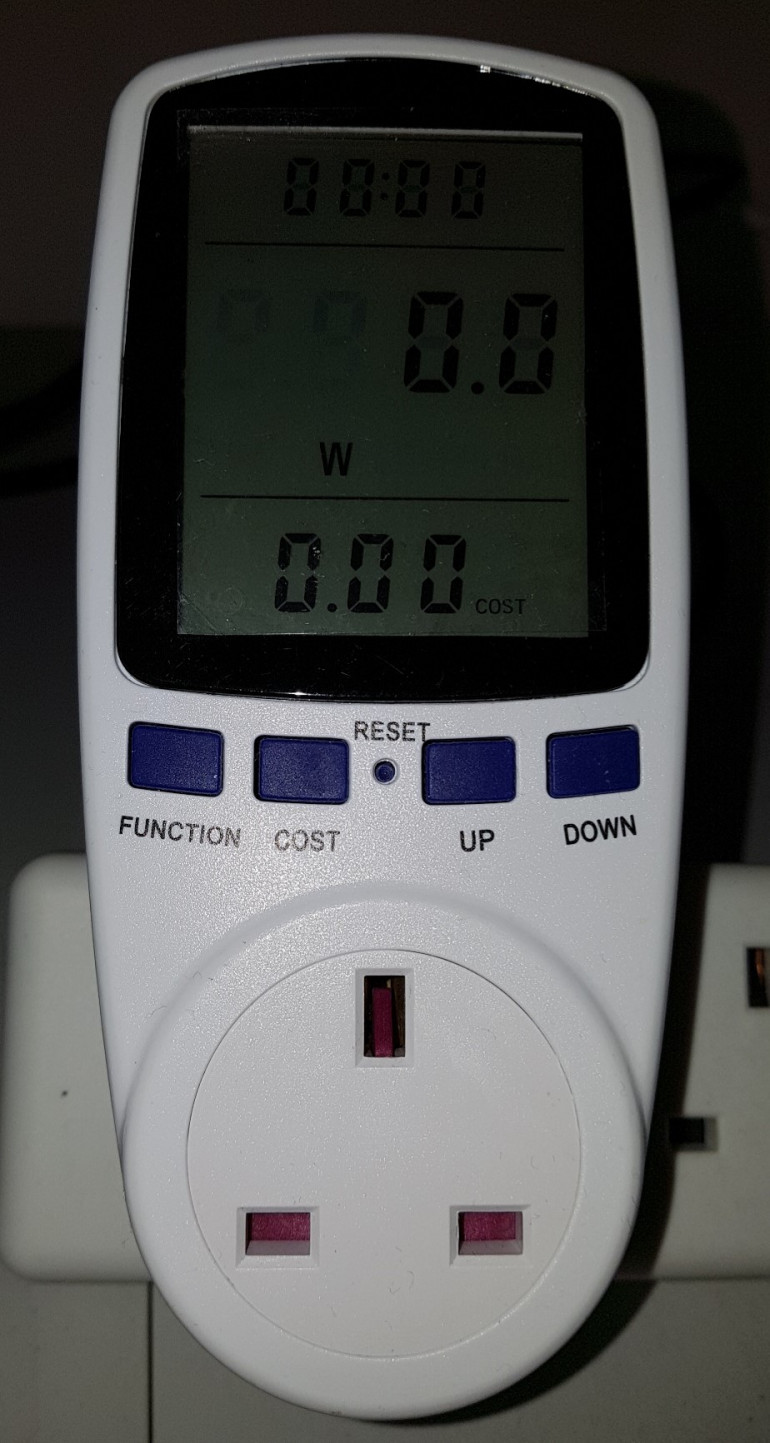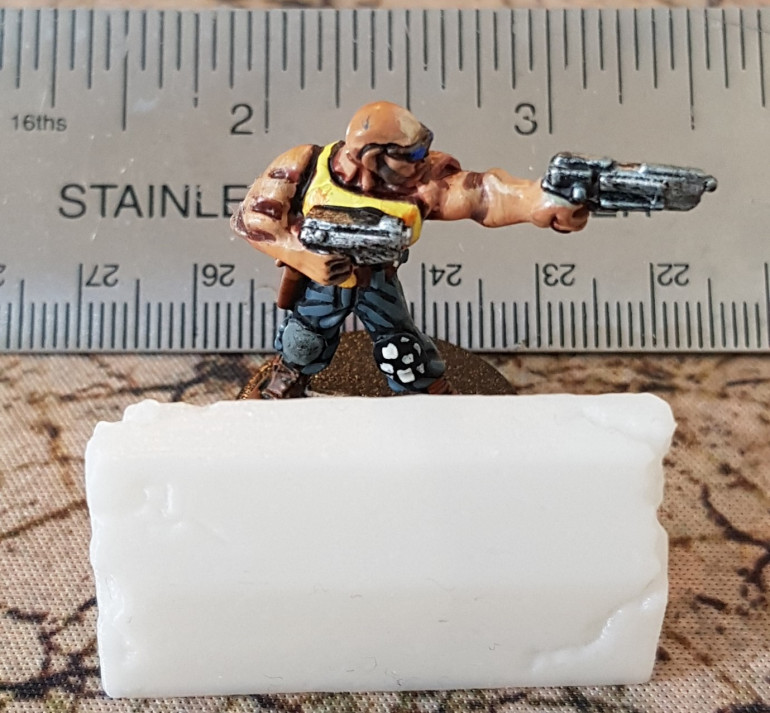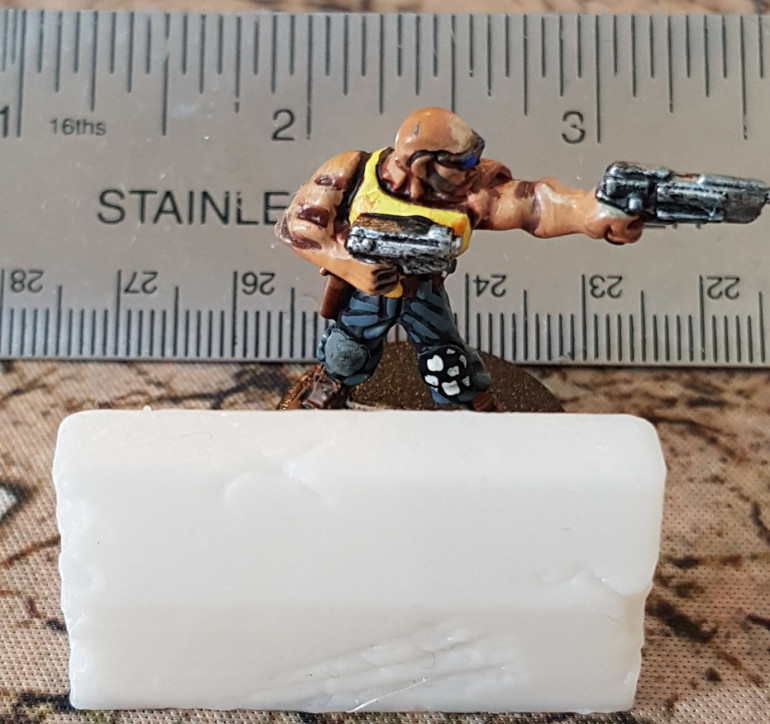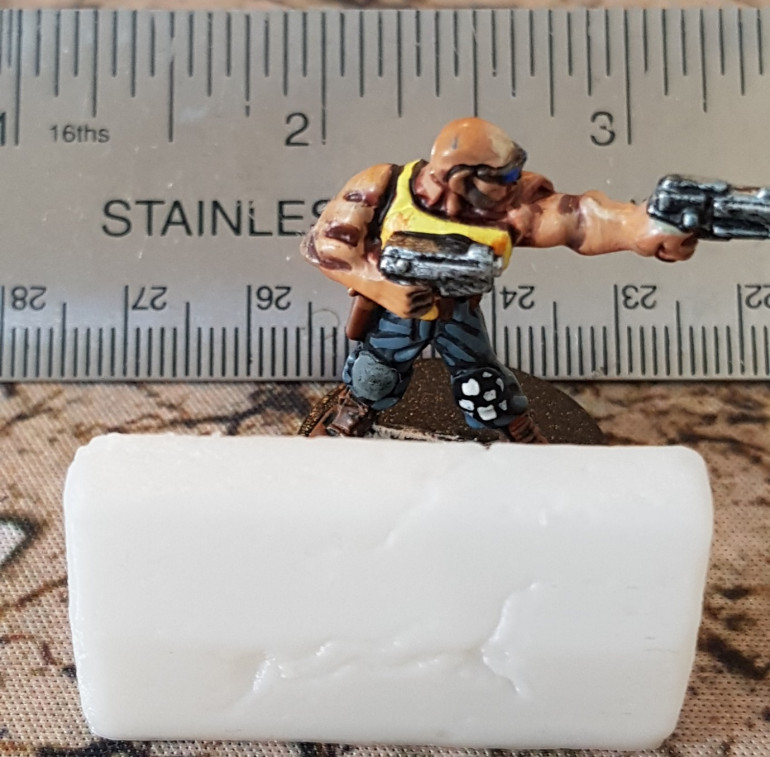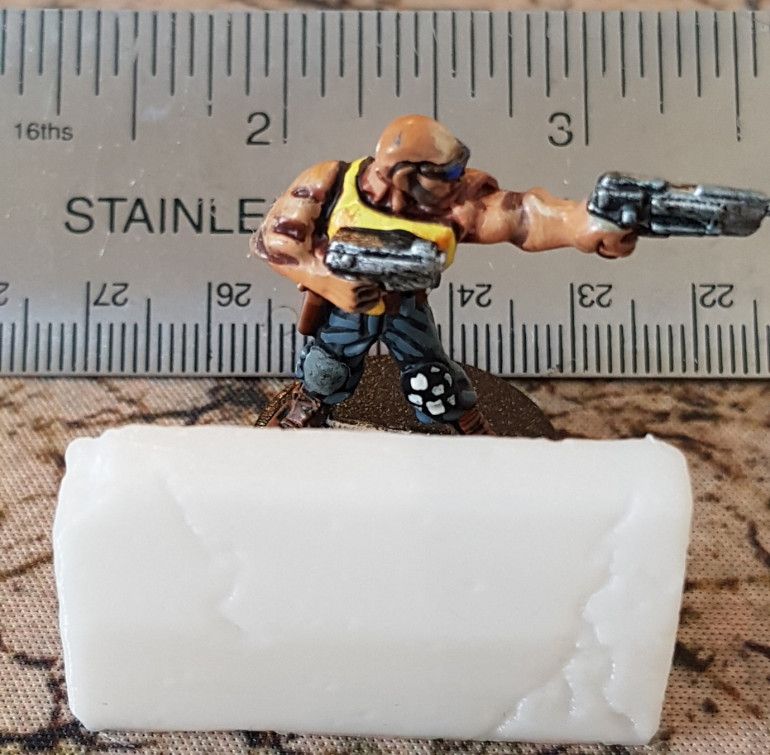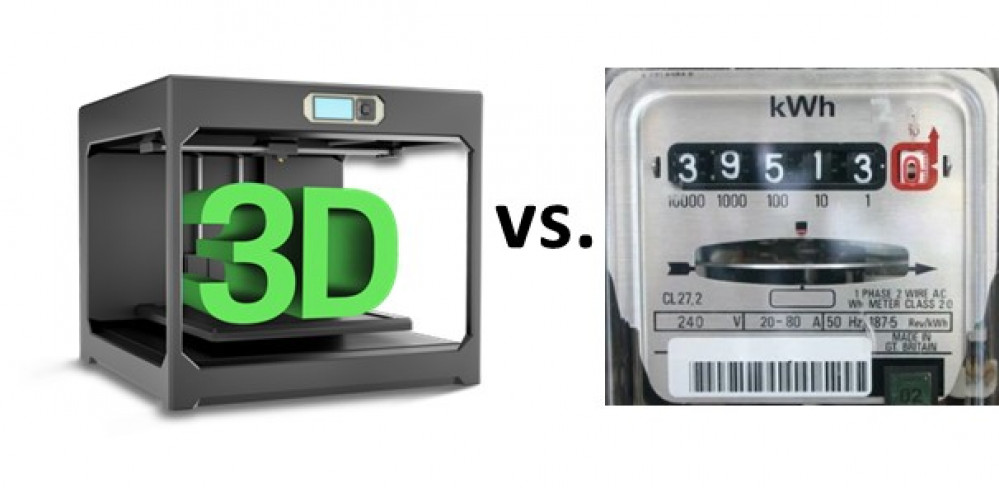
What’s the cost of a 3D print?
Recommendations: 58
About the Project
What does it cost to take an STL file and print it out on a typical home 3D FDM printer?
Related Genre: General
This Project is Completed
What’s the cost of a 3D print?
What does it cost to take an STL file and print it out on a typical home 3D FDM printer?
So, we’ve seen roughly how MUCH we can get 3D printed out of a 1kg spool of PLA (Polylactic Acid) filament on your average home printer (see my first project here) and onto your gaming tabletop. However, since there was still a little filament left on the spool, I figured I’d do another quick set of prints and this time try and calculate how much cold, hard cash it COSTS to print something out.
TLDR version: Not as much as you might think.
To turn a model file (typically referred to as an .STL file) into the instructions that your 3D printer can understand (called G-code), you need to run it through a program called a slicer. Basically, it does just what it sounds like it does – slices the model into thin layers that will then get printed out, one on top of the other until the model is done. One of the slicers I use is called Cura and is 100% free and extremely popular. You can get the latest version from Ultimaker here. [I won’t go into how you configure Cura for your printer as that’s a whole other project on its own and there are any number of websites, forums or Facepalm groups that can help you instead.]
Cura has basic material cost settings as standard – just go into the Material Cost section on Cura and update the various values as needed. I updated it with the price of an average spool of the filament I typically use (£17). Other slicer programs may have similar functions, I know Simplify3D does.
However, I wanted some extra functions, so I added a free plugin to Cura (“Material Cost Tools”) from the Community Plugins section of the Cura Marketplace. This is handy but very much optional.
Then I loaded the first of my files in and hit the ‘slice’ button.
After a short delay, Cura presented me with an updated view of the rendered model and some data. This data not only had the standard stuff from Cura (such as estimated print time), but also showed the results from the newly installed plugin – namely the approximate amount of filament the print would use (in both grammes and metres), but also how much that amount of filament was valued at.
This is a handy tool as it allows you to make changes to the way you slice the file (increase/decrease the layer height, infill, support settings, etc.) and after hitting the slice button an updated estimate is displayed. Great for trading off detail vs. print speed, etc. and faster prints mean less electricity usage.
That’s all well and good, but surely there’s more to it than this?
Indeed there is, read on…
Getting to the nitty gritty
Now what I covered previously was all well and good, but printers don’t run on free electricity (at least, not here in Casa del Spanky anyway), so how do you work out the amount and cost of that used electricity?
There are two ways that I know of and have used:
- The easy, but costs money way – Use a power meter
- The slightly harder, but free way – Do math (or rather, do a bit of reading/Google-Fu and then find a calculator to do the hard thinking for you!)
Option 1 – The Power Meter
These handy devices are available from many sources, I got mine (a YOUTHINK Power Meter) via Amazon – link here , but there are many others available. NOTE: When using Amazon, please remember to use the affiliate link of whatever your favourite YouTuber is first, just to throw them a little love. After all, it doesn’t cost you any extra and every little bit helps them out.
You’ll also need to know what your electricity cost(s) are. This will be shown on your power/electricity bill as a ‘kilowatt per hour rate’ (kWh). For me, it was 16.487p/kWh (roughly £0.16), but obviously, yours will vary according to your supplier and tariff.
Plug the power meter in – ideally to an extension strip so you can read it without having to lie on the floor. Your knees will thank you later. Trust me, I know – I’m old. Now follow the instruction manual for setting it up (this took less than 30 seconds on mine) and then plug your printer into it. Don’t turn the printer on just yet. First make sure you have your file sliced, inserted into your printer via whatever media and ready to go.
All set? Good. Record what is on the Power Usage display of the power meter (this is your START VALUE). Turn on the printer and tell it to start printing. You’ll see the power usage increase quite quickly as the printer warms up, turns on any fans and begins to heat the nozzle (and heated bed if you have one). You might want to make a note of the Power Usage display again as soon as the printer begins to print, just for completeness (call this PRINT VALUE).
Let it the file print. Ideally, you’re either printing something small/fast, or else you remembered how long the slicer estimated it would take to print and come back in time to watch it finish. Record the Power Usage display again just as it finishes (call this the FINISH VALUE). You now have enough data to work out your power use cost.
Take the power usage number you wrote as the printer powered up (your START VALUE). Subtract that from the value you wrote down when your print had finished (your FINISH VALUE) – this gives us the POWER USED. Now, multiply your kWh rate by the POWER USED – that should give you your monetary cost for the print.
Option 2 – Do Math
Every electrical device has a power rating. These are usually displayed on a label somewhere on the item and are normally rated in watts/wattage (W). This isn’t an exact thing to do without a power meter, so you’ll just have to do what I did before I bought mine – Google it!
For example, the average power draw of my Ender 3 is 125 Watts, or 0.125kWh, when printing at 200°C and with the bed set to 60°C, and a maximum consumption of 277 Watts when it’s heating up.
To calculate exactly how much it’s going to cost you to run an Ender 3 with those standard PLA printing temperatures, multiply the cost of the kWh that your power company is charging you (£0.16487 in my case) by your printer kWh rate (0.125kWh for an Ender 3) and you’ll know the cost of it printing per hour (£0.02060875, or roughly 2 pence). Remarkably similar numbers to what I got when using the power meter on my Creality CR6-SE.
Note: This is the full electrical cost of the print, as the start-up/heating up process is also technically part of producing the finished result. If you only want the cost of what it took to just print the file, then replace the START VALUE with the one you wrote just as the model began to print (the PRINT VALUE) and do the math above, e.g. [PRINT VALUE – FINISH VALUE = POWER USED]
Some power meters have buttons/functions that allow the soft storage of readings that can speed up this process.
Show and Tell time
Having dealt with two ways to work out your power usage, it’s time to put method 1 into action using the last of the PLA filament from my first project.
My Test Prints
Here’s a quick overview of what I used to do these prints, along with the various results:
Printer: Creality CR6-SE
Slicer software: Ultimaker Cura 4.9.1
Cura Profile: Cura4-8TerrainDungeon4mm_V1 – Standard Quality (courtesy of Tom Tullis/Fat Dragon Games)
All files are from the “Wasteland Inhabitants” [Punkapocalyptic Kickstarter] by Bad Roll Games and the painted models are from EM4 Miniatures (used to show 28mm scale).
File: Concrete Wall 1
Estimated print time: 43 minutes using 3g/0.90m of PLA for a cost of £0.05
Calculated power cost: £0.02 (0.0186p)
File: Concrete Wall 2
Estimated print time: 40 minutes using 3g/0.89m of PLA for a cost of £0.05
Calculated power cost: £0.01 (0.0144p)
File: Concrete Wall 3
Estimated print time: 43 minutes using 3g/0.88m of PLA for a cost of £0.04
Calculated power cost: £0.01 (0.0135p)
File: Concrete Wall 4
Estimated print time: 43 minutes using 3g/0.90m of PLA for a cost of £0.05
Calculated power cost: £0.02 (0.0155p)
File: Concrete Wall 5
Estimated print time: 2 hours & 51 minutes using 12g/3.98m of PLA for a cost of £0.20
Calculated power cost: £unknown (I’m a doofus and forgot to write the figures down)
* Estimation based on Print #2 above (0.0144p/40 minutes = 0.00036p per minute)
File: Concrete Wall 6
Estimated print time: 3 hours & 10 minutes using 12g/4.10m of PLA for a cost of £0.21
Calculated power cost: £unknown (Because I’m still a doofus!)
* Estimation based on Print #2 above (0.0144p/40 minutes = 0.00036p per minute)
OK Spanky, so what's the bottom line?
Conclusion
The above information should give you the ability to calculate some of the costs of producing a 3D print. Note the use of the word some.
There are other factors that should be taken into consideration when it comes to costing a print if you intend to charge someone for it and do not want to be left out of pocket in the long run. Namely:
- Wear and tear on the printer – This includes all physical/mechanical parts.
- Any additional consumables – Glue sticks, hairspray, sandpaper, filler/primer, bed covering, etc.
- Sourcing of file – The cost of buying/licensing it or possibly designing it.
- Your time – Yes, I know the printer is doing the heavy lifting, but still, you must load/slice the file and make sure it prints OK as well as any of the manual stuff we tend to forget. Basically, if it takes you time to do something, it should have a cost associated with it.
- Failed prints – Unless you can find a way to recycle/repurpose them, then the wasted power/materials need to be at least marginally factored in.
- Postproduction/finishing (if required).
- Postage & packaging (if required).
- All applicable taxes – trust me, you don’t want the man on your ass for non-declaration or non-payment.
- As a follow-on to the point above, you may need to pay an accountant. Sheesh, doing business sure sucks the fun out of things!
- Whatever else it is that should be on this quick list that I’ve completely forgotten about. Basically, if it costs cash, can wear/run out or takes time, then factor it in somehow.
Luckily, most online costing programs/websites nowadays have these things well covered. Just do a Google search for “calculating 3d print costs” and you’ll be fine.
Finally, it should be noted that there are several factors that can affect the power usage on an FDM 3D printer:
- Print bed temperature – This accounts for roughly 70% of the power draw, so lower it (or even turn it off altogether) if you can still get print adhesion. Most PLA filaments can be printed on a ‘cold’ bed, just apply some glue stick or hairspray first. Better yet, use a coated bed surface such as the ones made by Lokbuild.
- Slicer settings – Try a higher printing speed, a lower amount of infill and shells, and use the tallest layer height possible. However, overall, this will give the print less detail and strength (which is why these settings are normally used while prototyping), but the model will sometimes print in half the time and therefore use half the power.
- Nozzle size – Most printers come with a 0.4mm nozzle but swapping that out to a 0.6mm or even a 0.8mm will drastically improve print speed (see above), and therefore reduce your power consumption.
If you’ve made it this far, hopefully, you’ll have found something useful (and/or cured your insomnia), either way, I hope this adds a little more insight into how cheap/cost-effective it can be to 3D print things, not just for our hobby but in general too.
Final Note
This was written from an FDM (Fused Deposition Modelling) or filament printer point of view, but the same basic principles apply to using a resin (Stereolithography/Digital Light Processing) printer. You’ll just be measuring/costing your printable medium in litres and millilitres instead of kilograms and metres. I may cover this in another project.









































